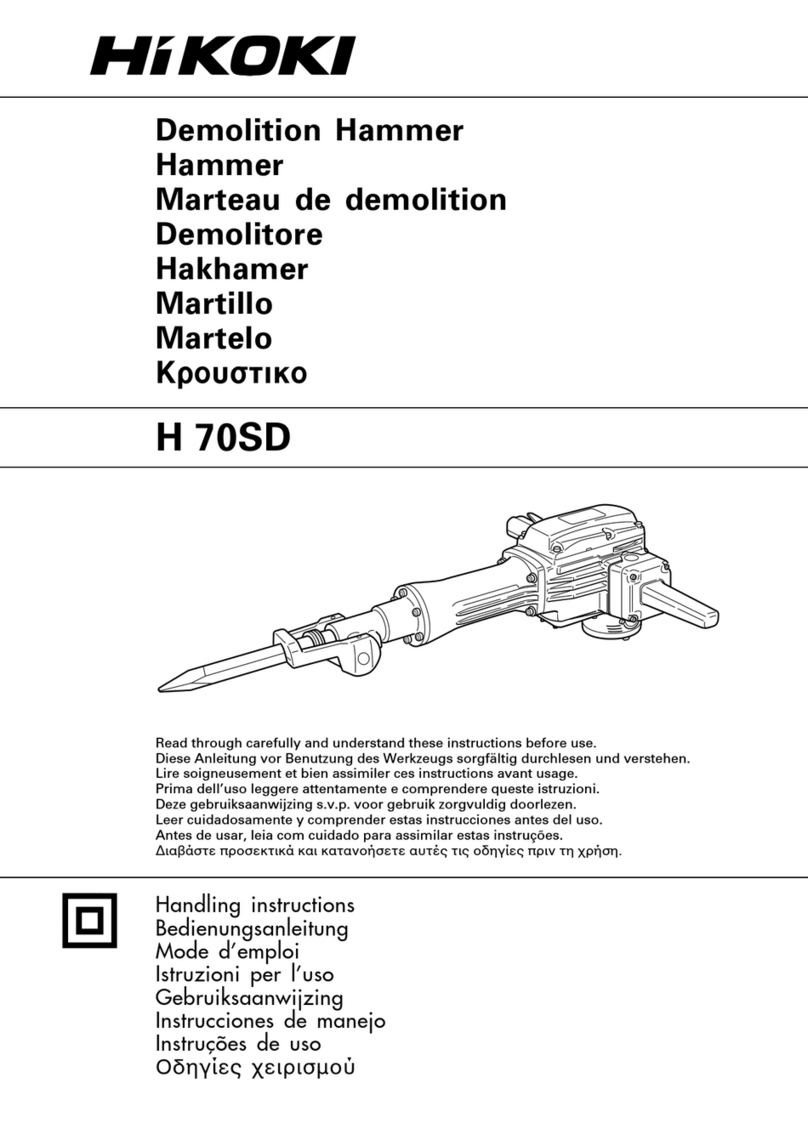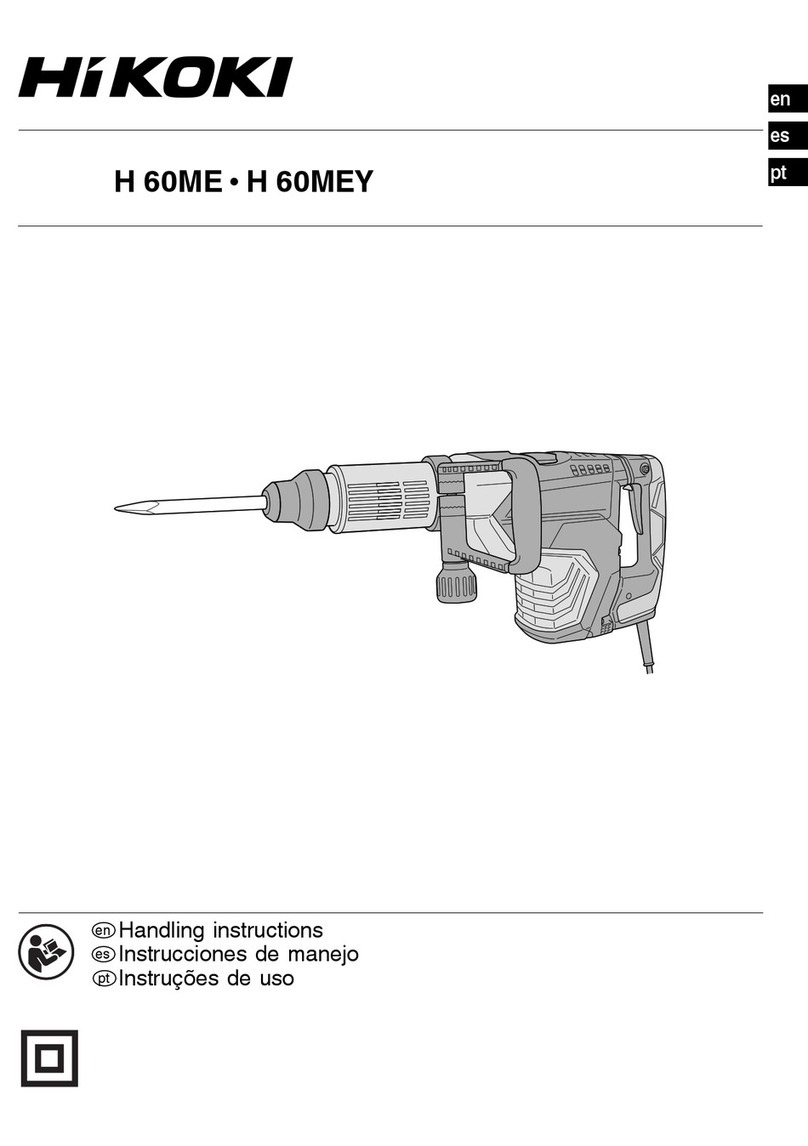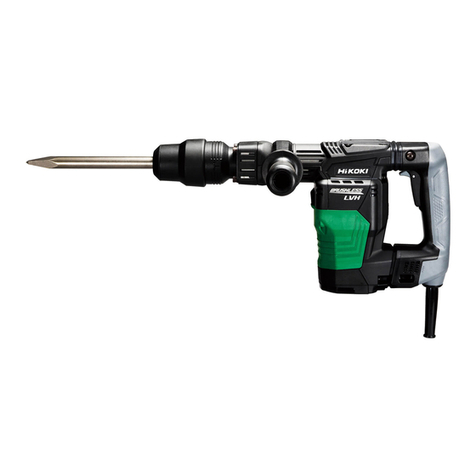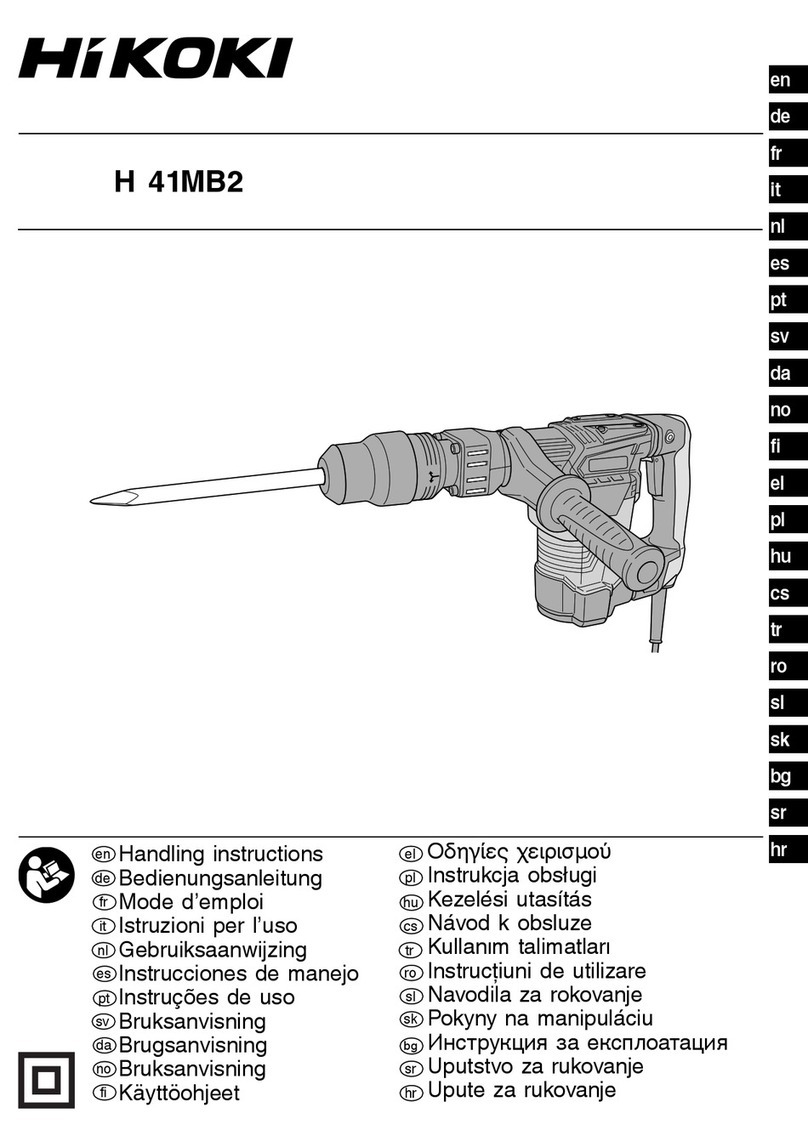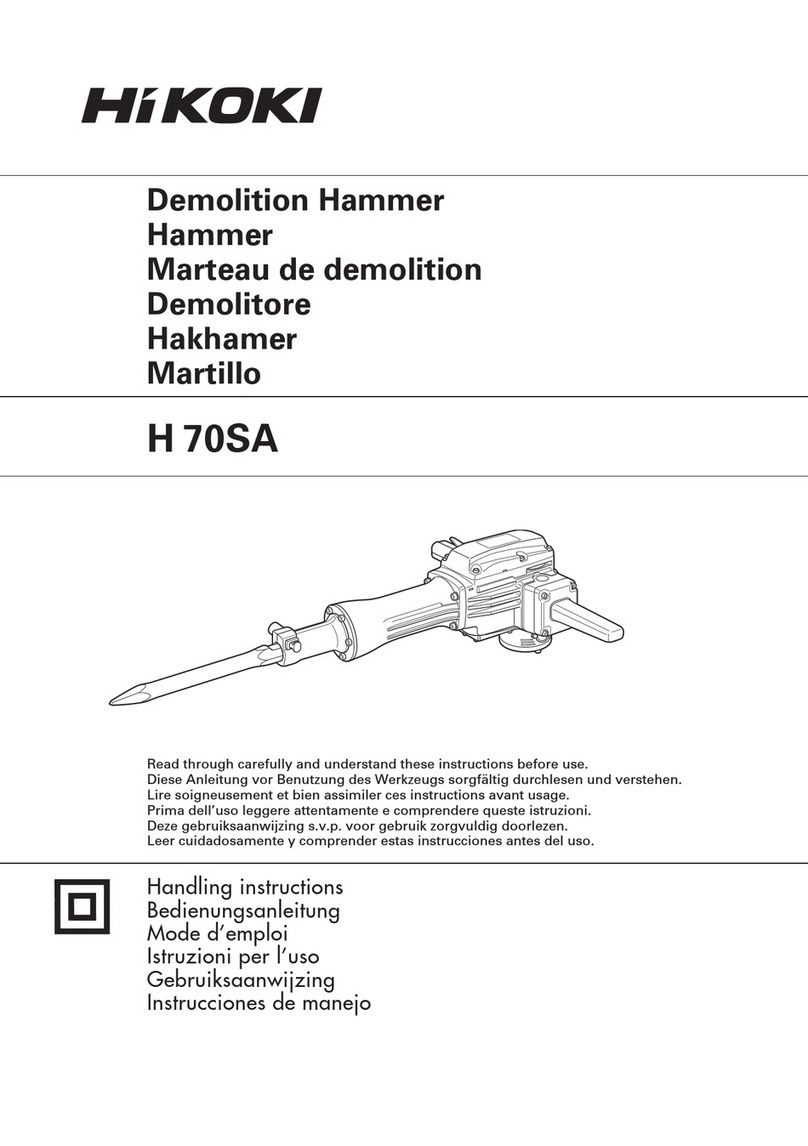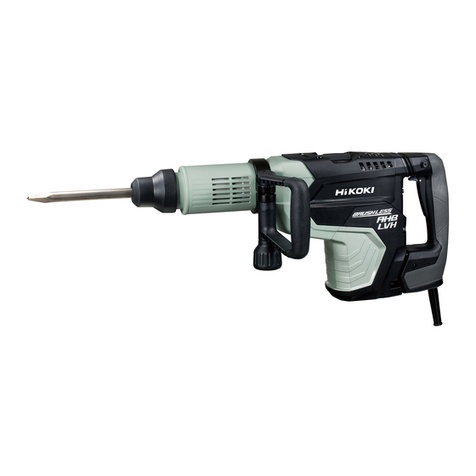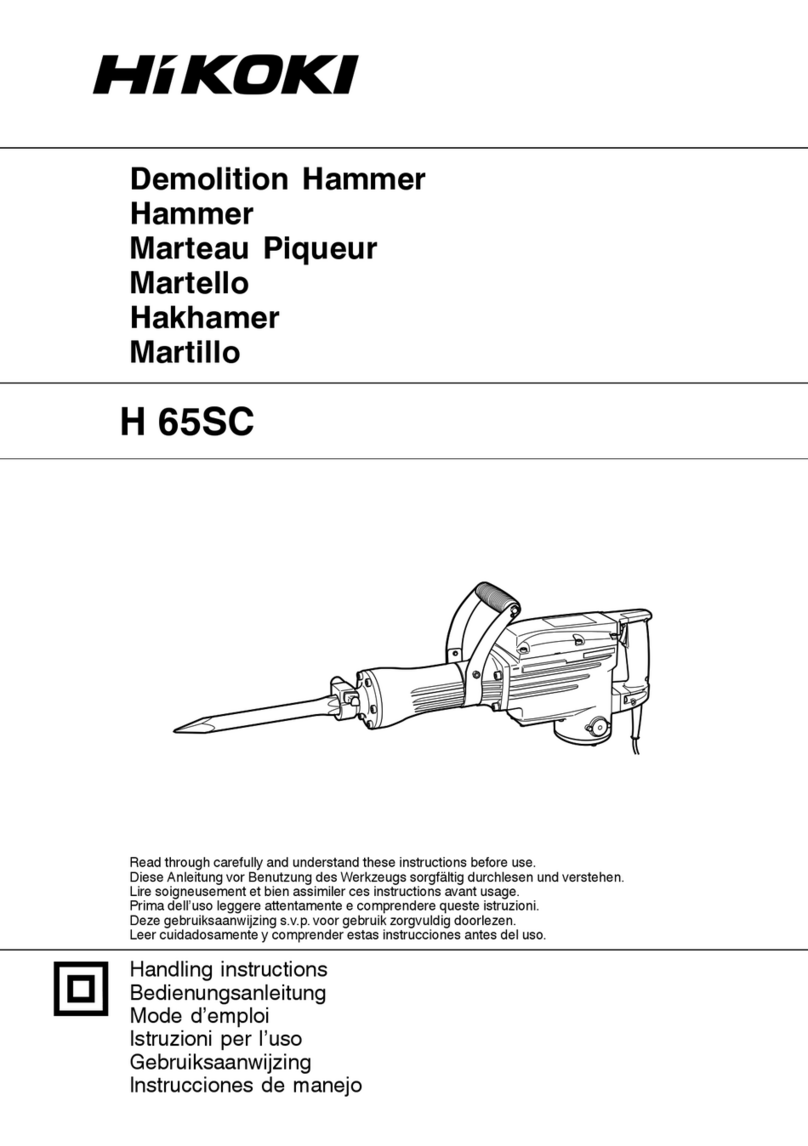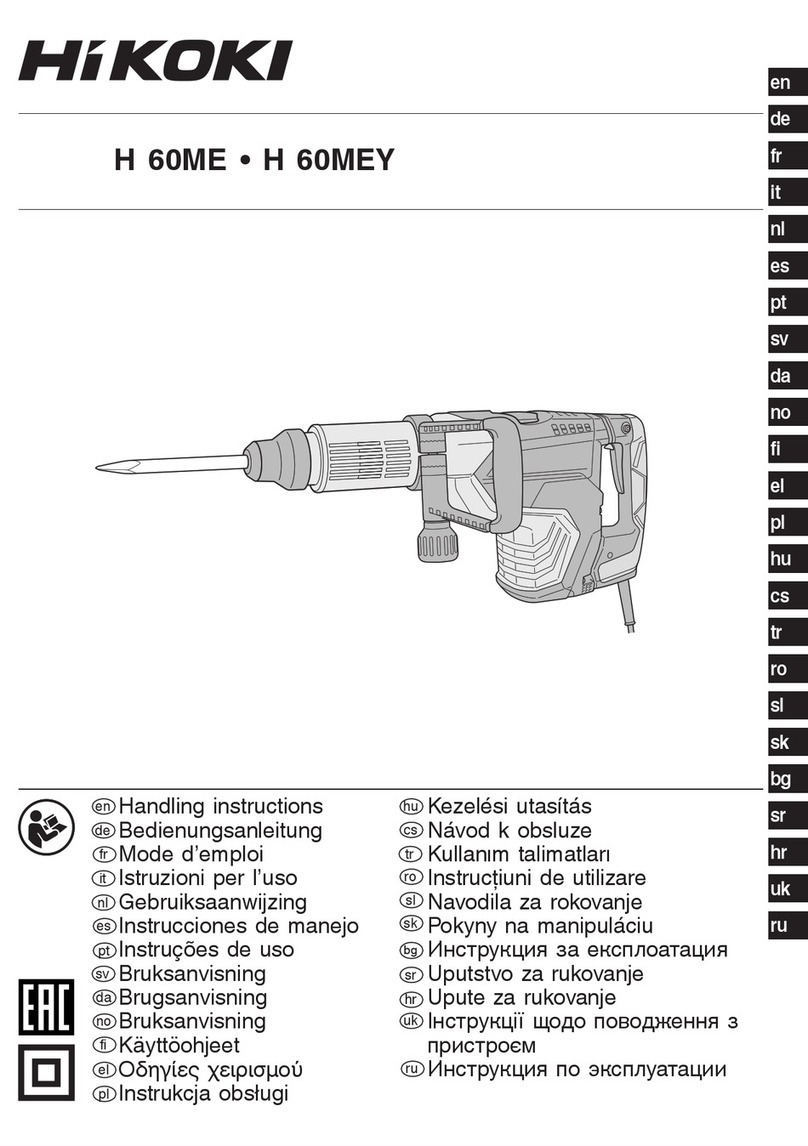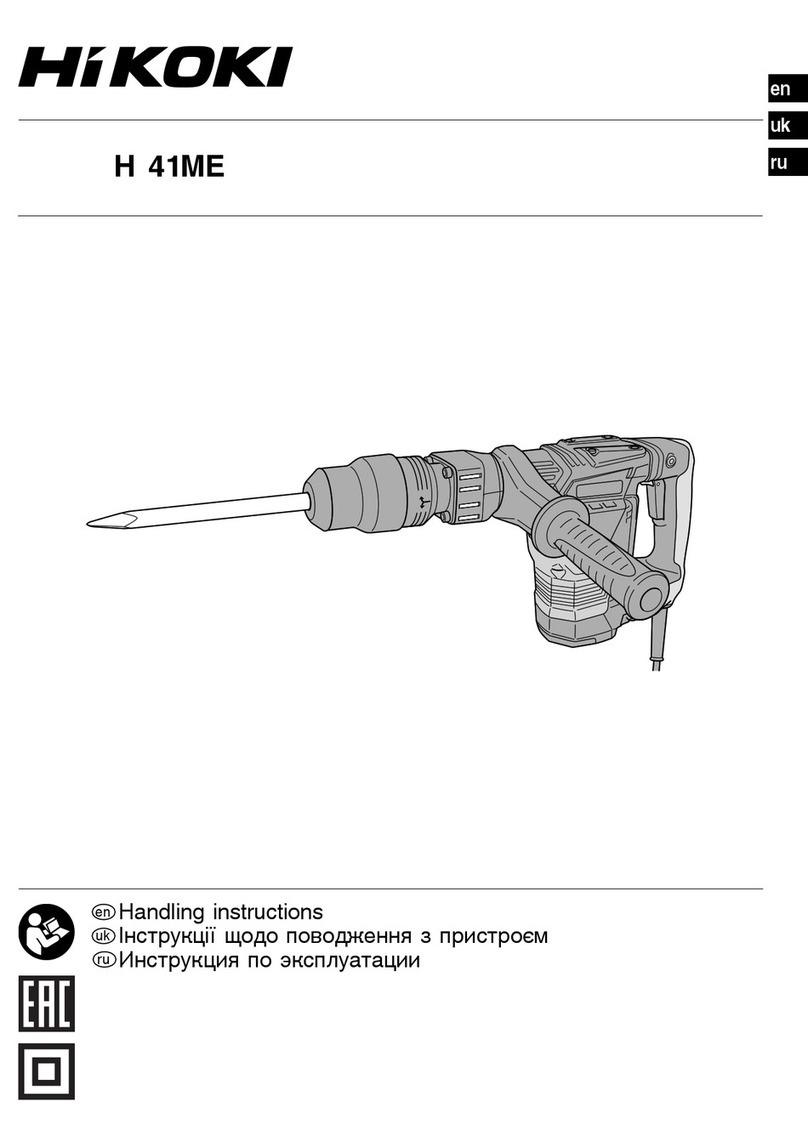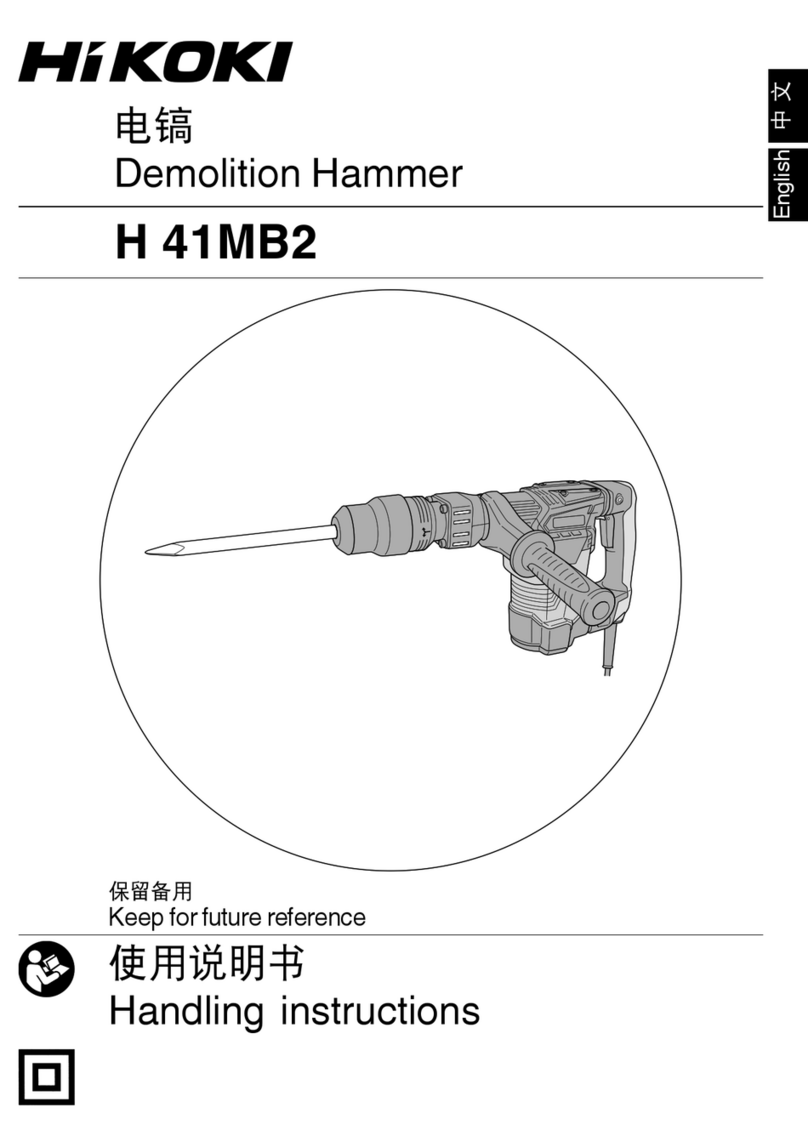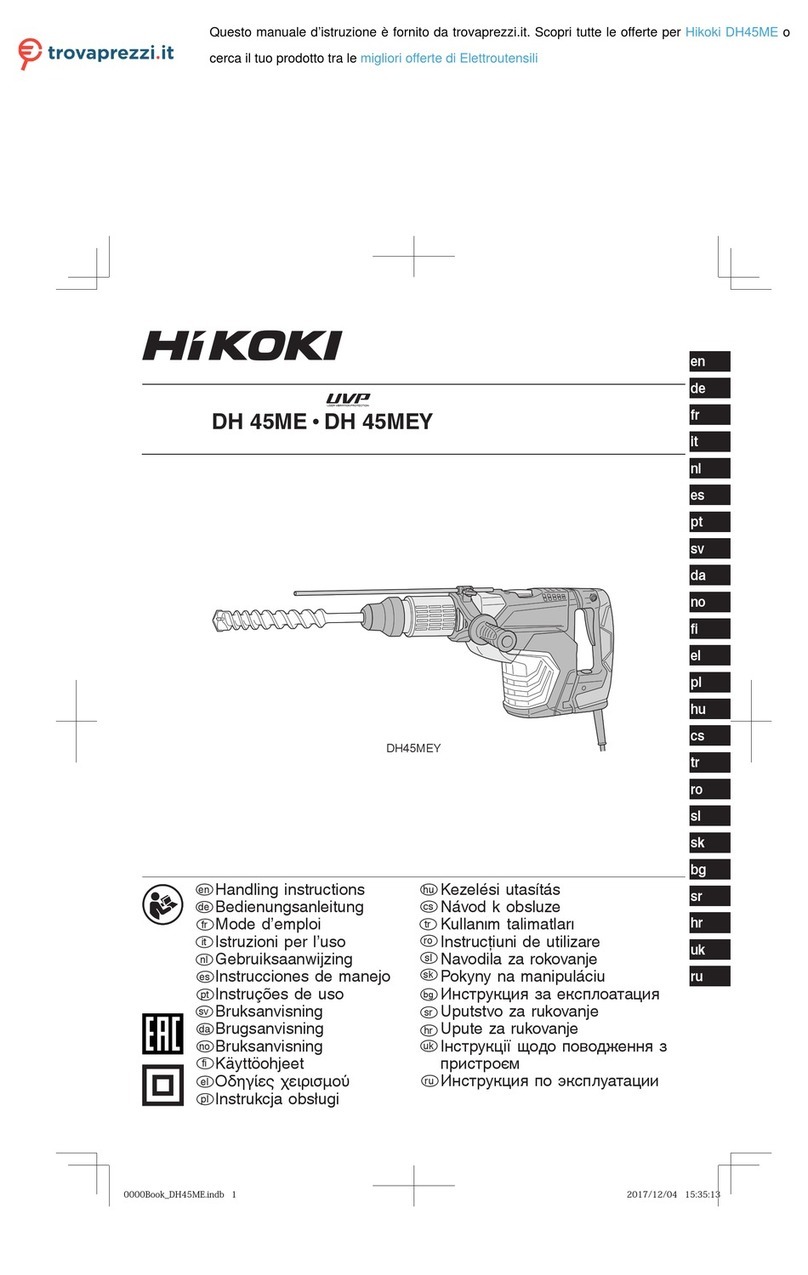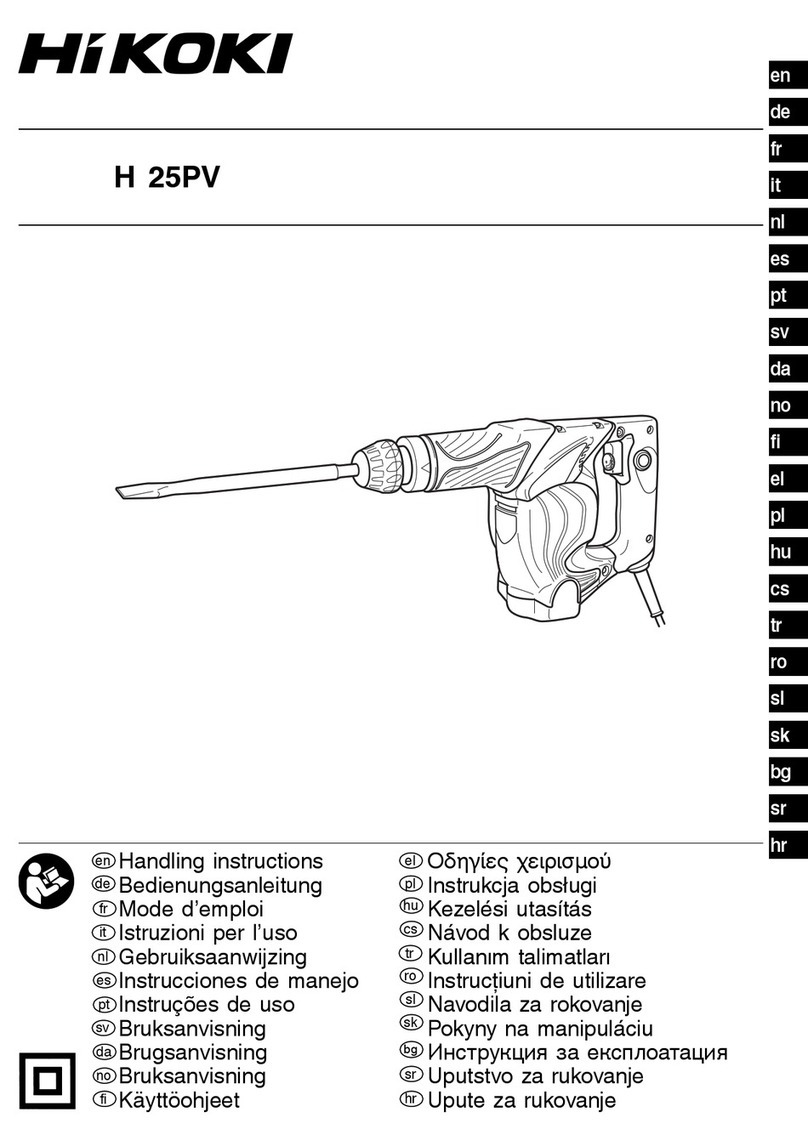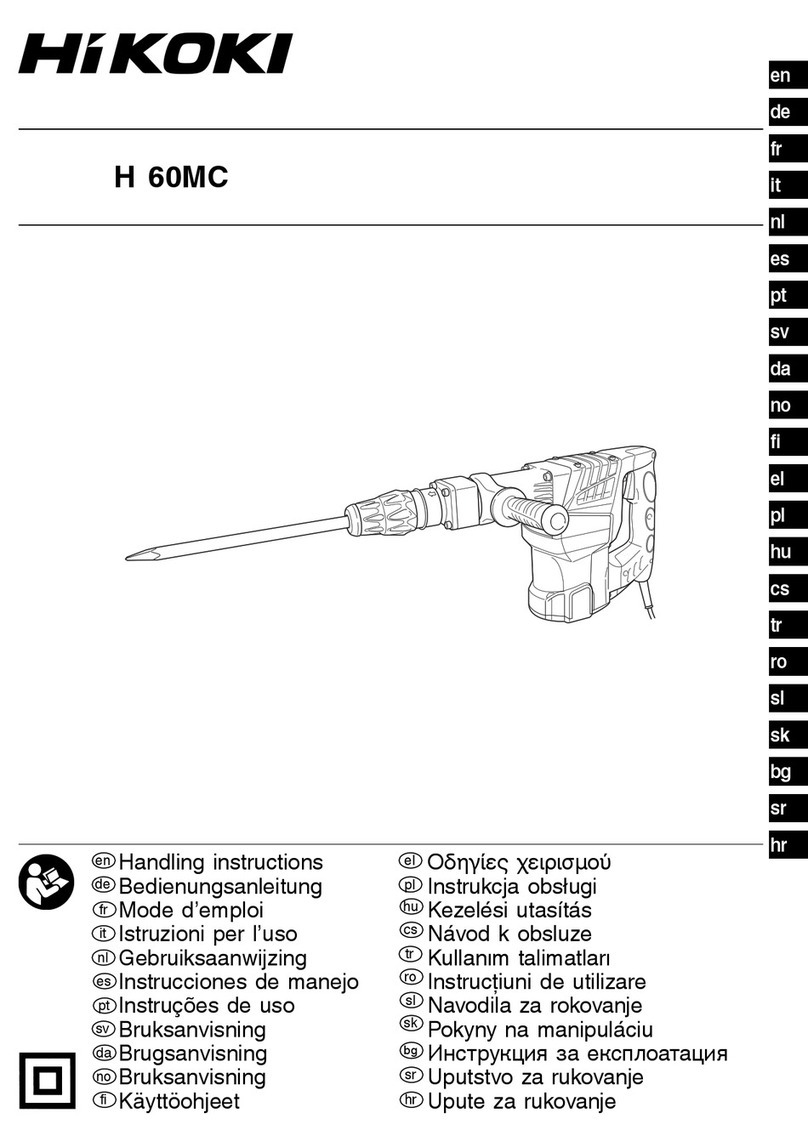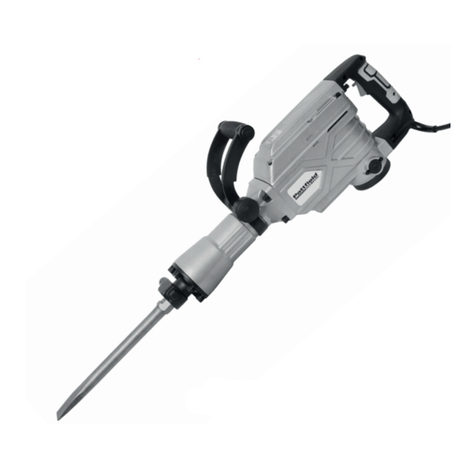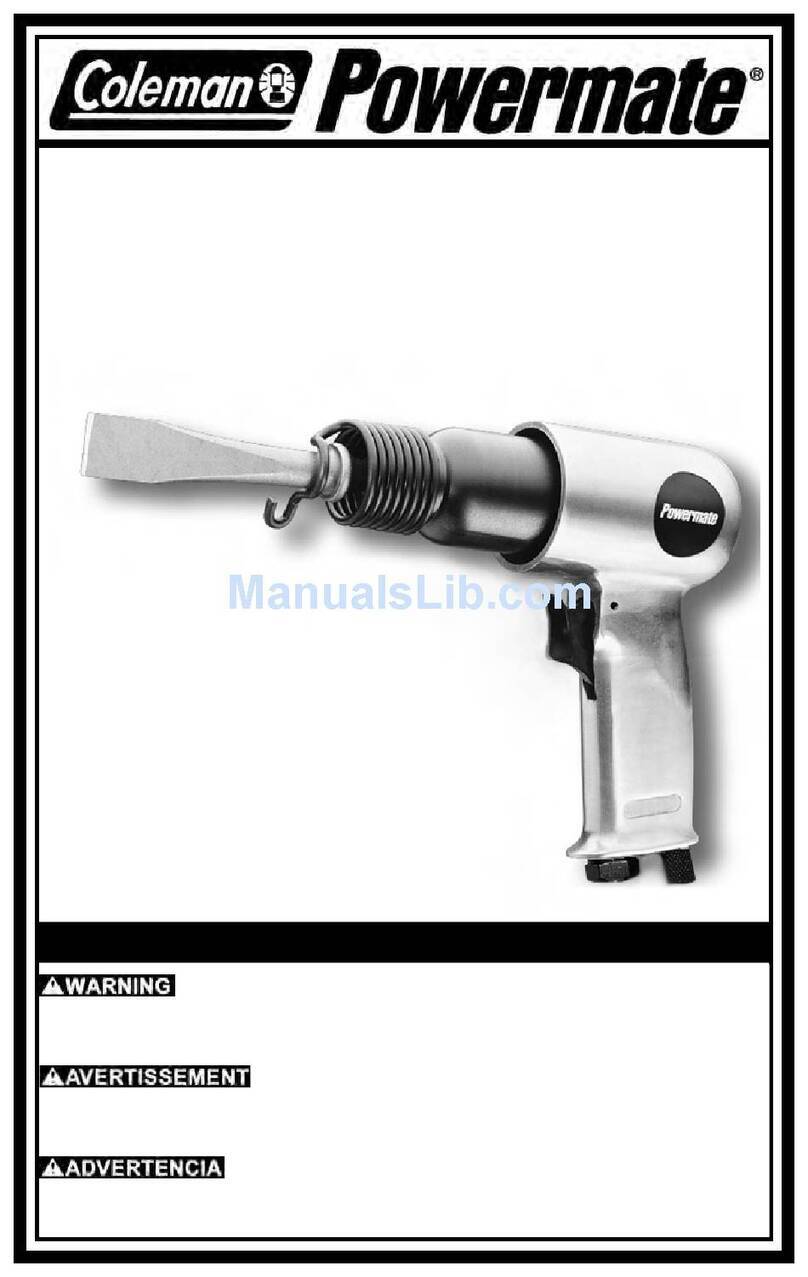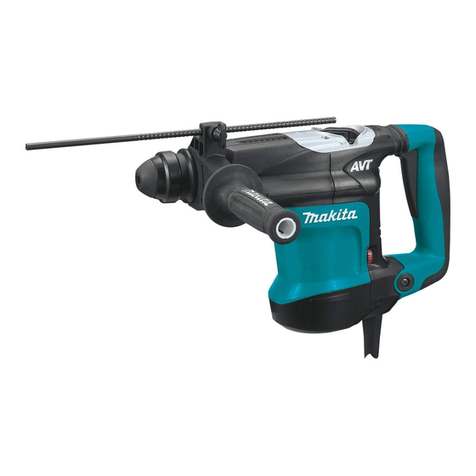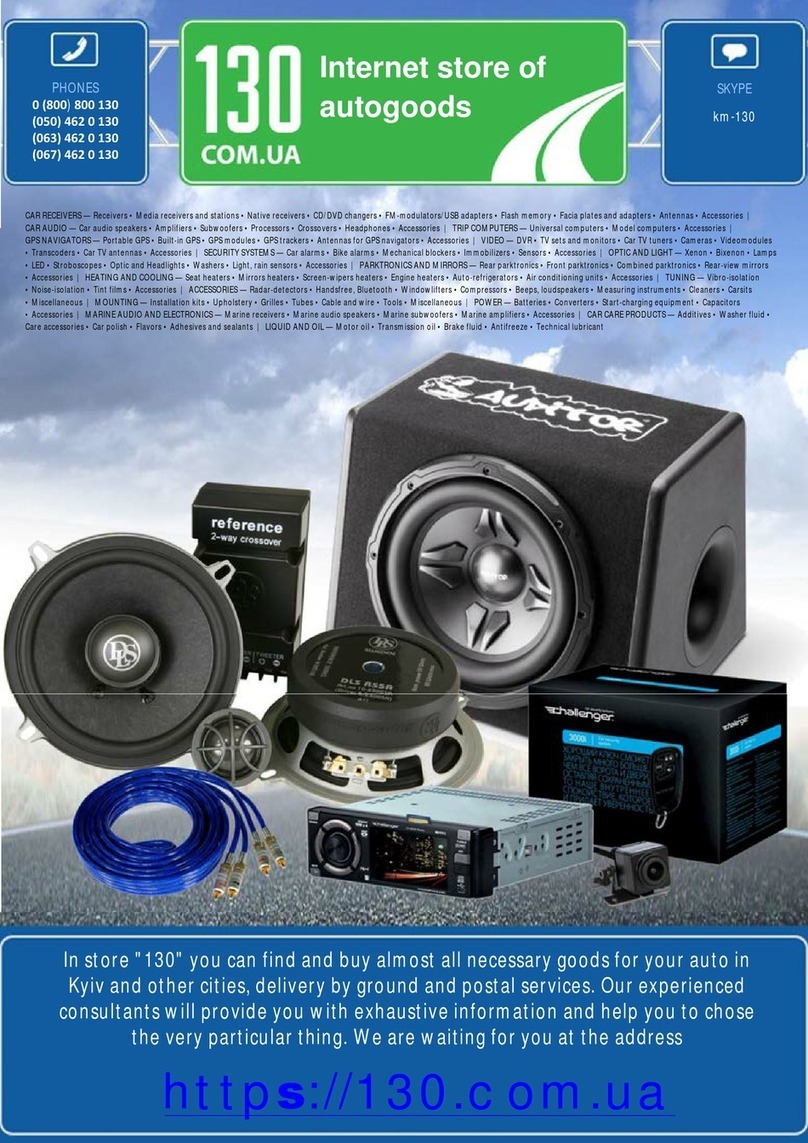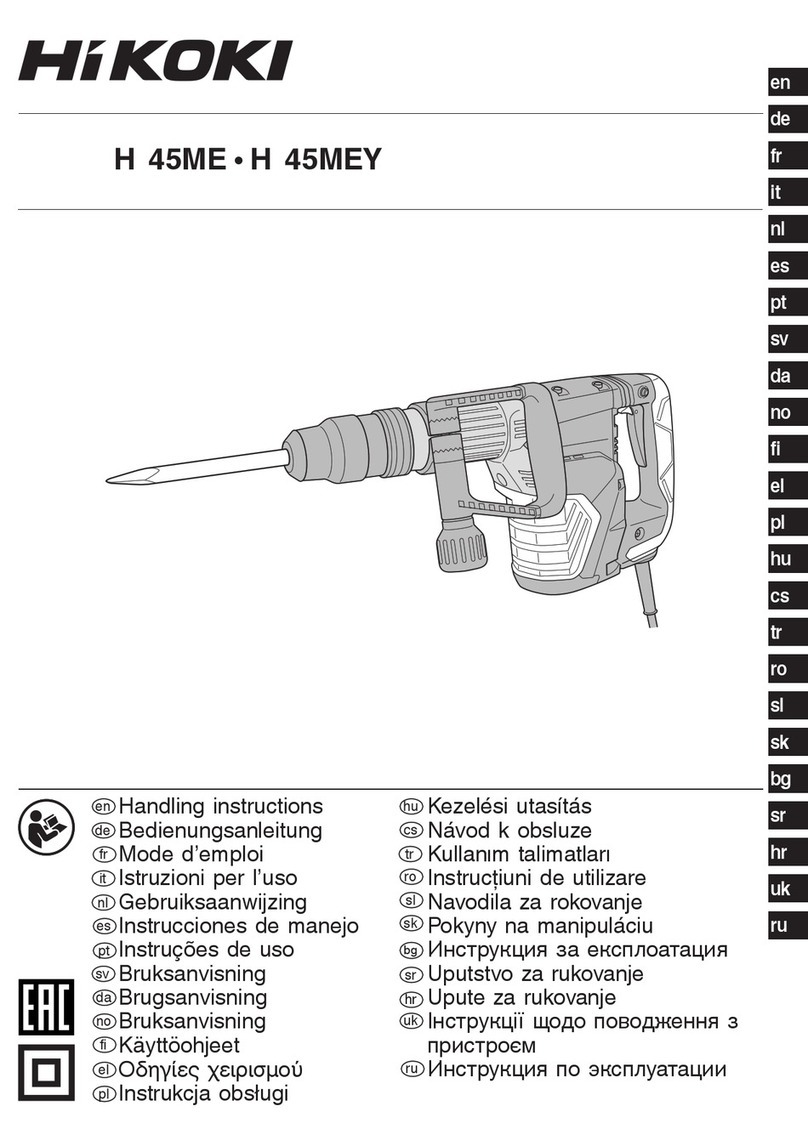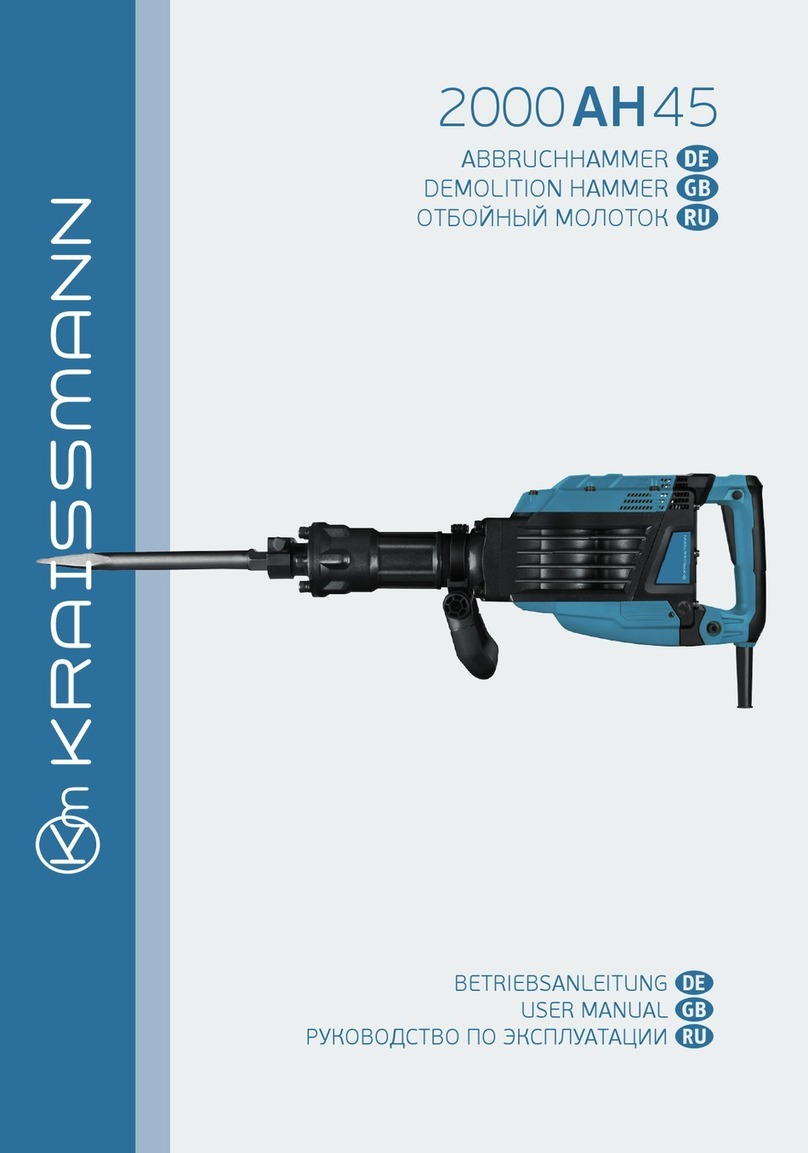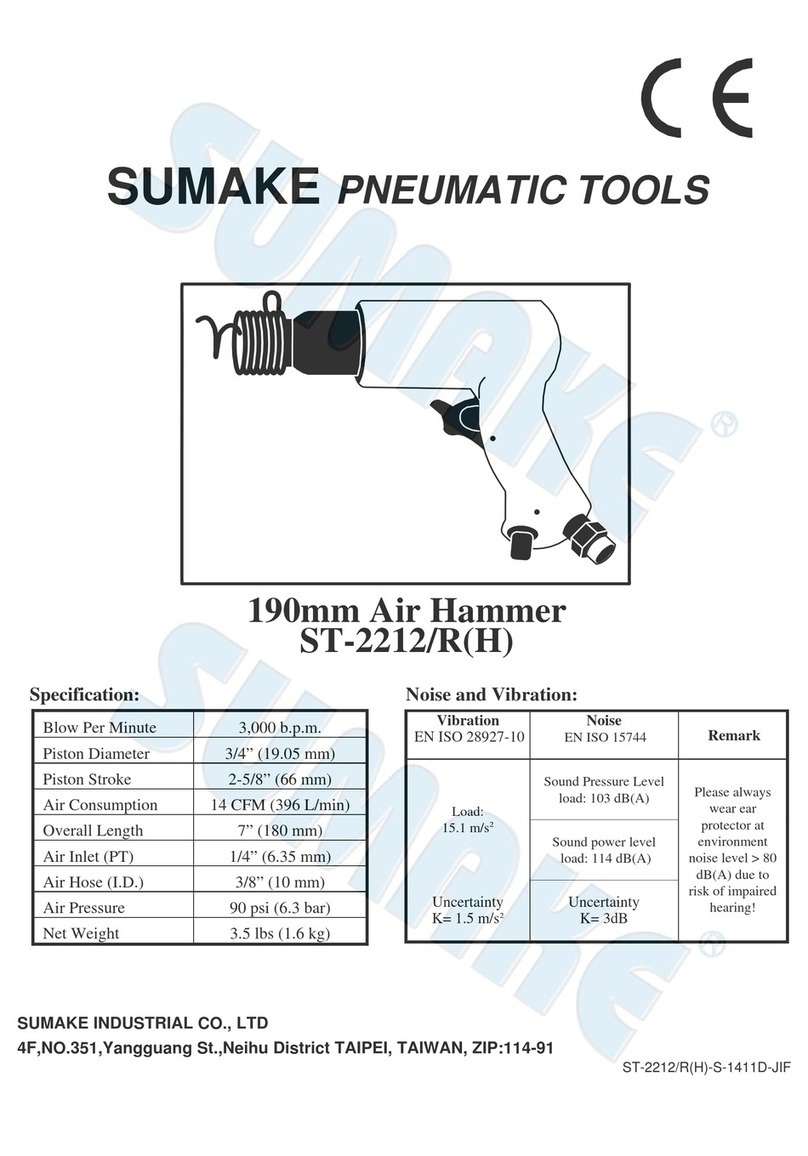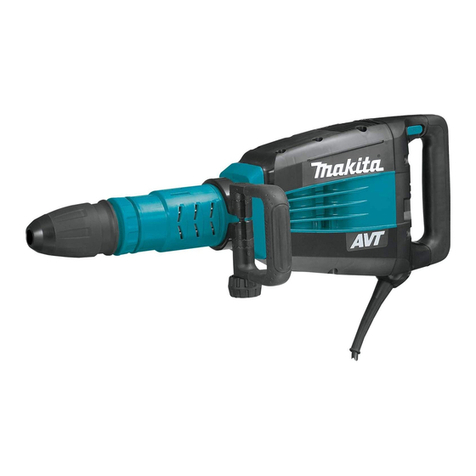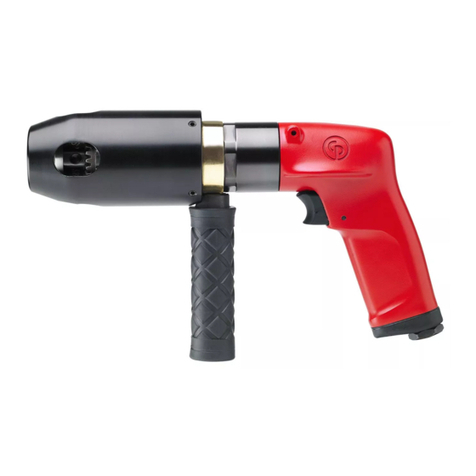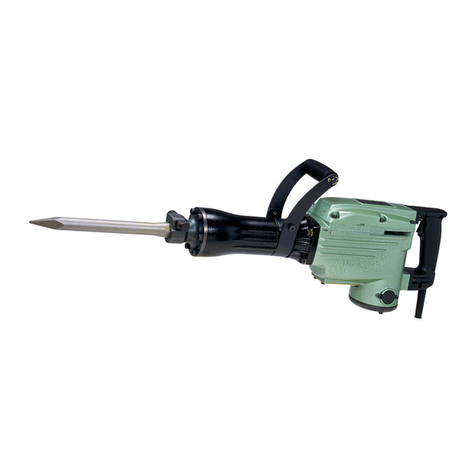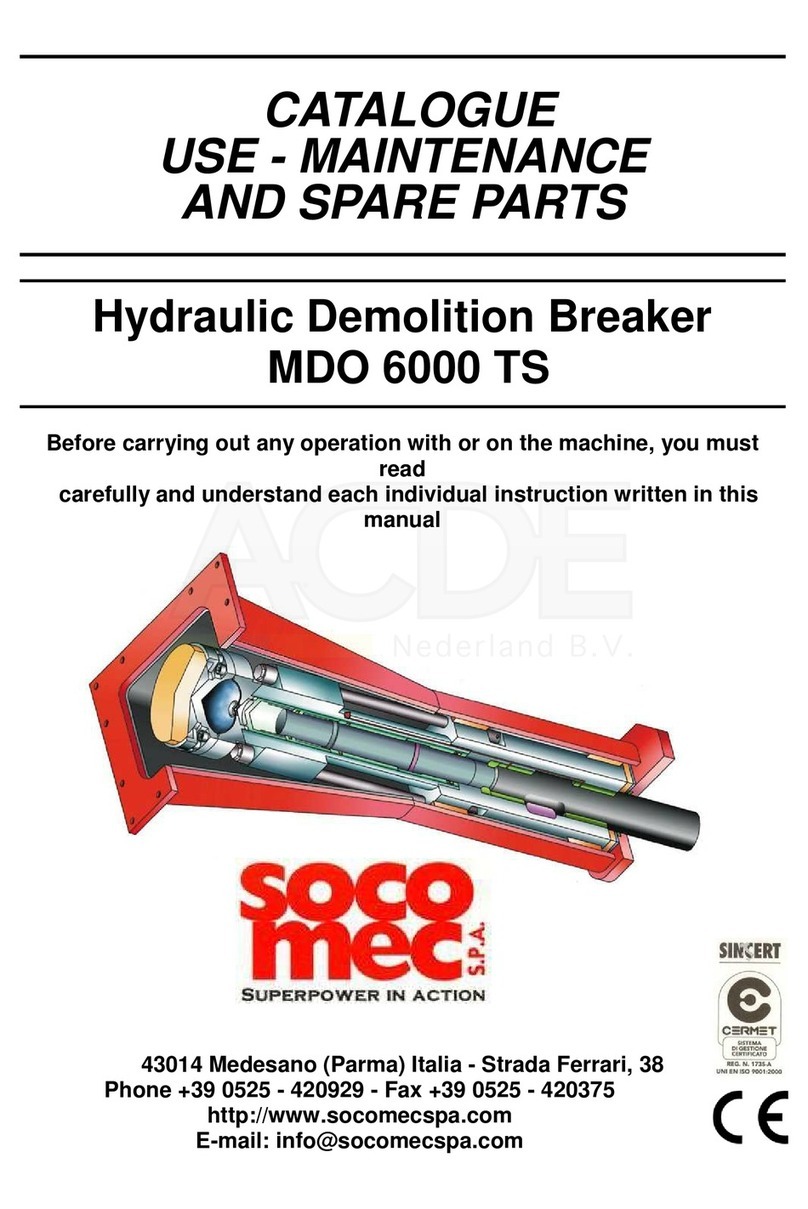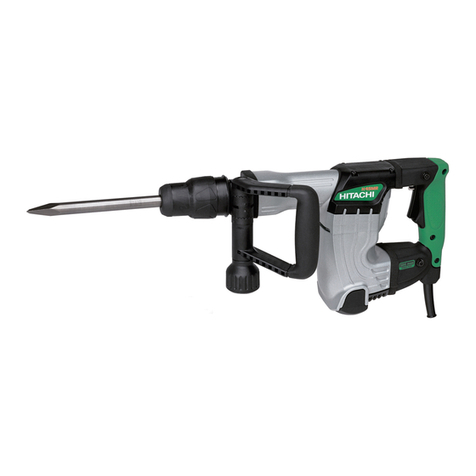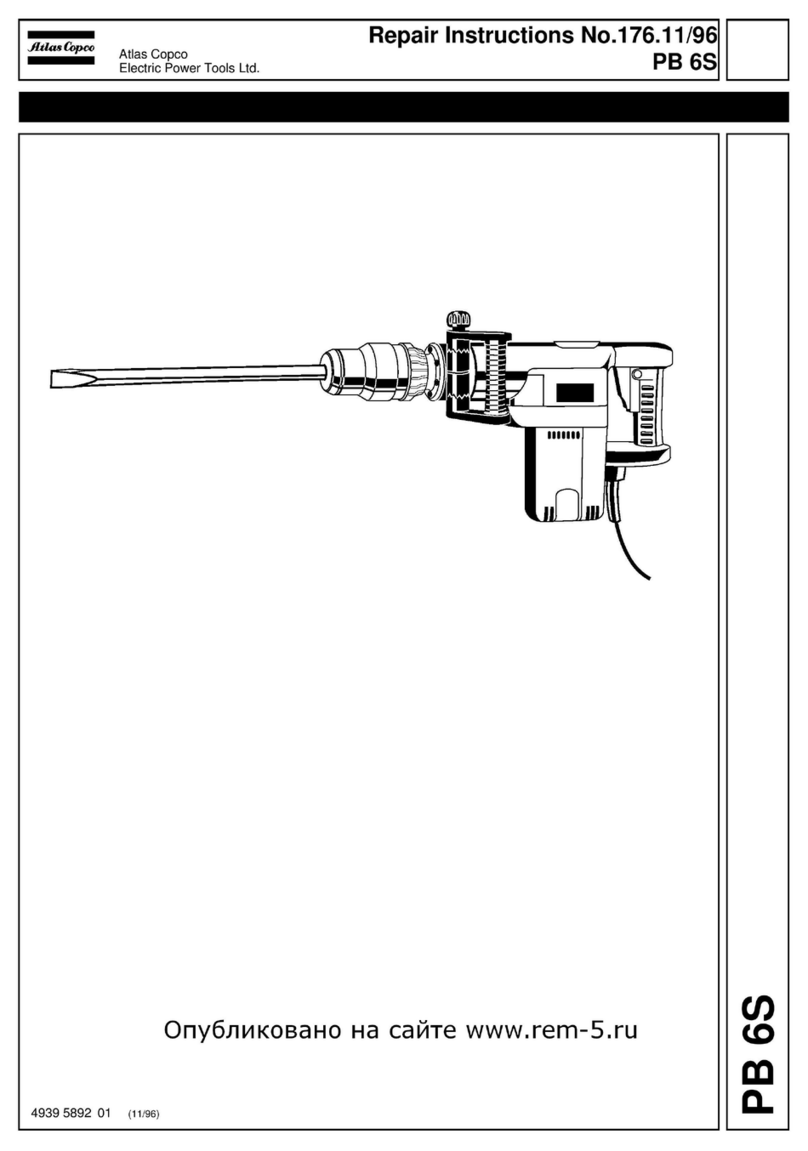
English
8
Slippery handles and grasping surfaces do not allow
for safe handling and control of the tool in
unexpected situations.
5) Battery tool use and care
a) Recharge only with the charger specified by the
manufacturer.
A charger that is suitable for one type of battery
pack may create a risk of fire when used with
another battery pack.
b) Use power tools only with specifically
designated battery packs.
Use of any other battery packs may create a risk of
injury and fire.
c) When battery pack is not in use, keep it away
from other metal objects, like paper clips,
coins, keys, nails, screws or other small metal
objects, that can make a connection from one
terminal to another.
Shorting the battery terminals together may cause
burns or a fire.
d) Under abusive conditions, liquid may be
ejected from the battery; avoid contact. If
contact accidentally occurs, flush with water. If
liquid contacts eyes, additionally seek medical
help.
Liquid ejected from the battery may cause irritation
or burns.
e) Do not use a battery pack or tool that is
damaged or modified.
Damaged or modified batteries may exhibit
unpredictable behaviour resulting in fire, explosion
or risk of injury.
f) Do not expose a battery pack or tool to fire or
excessive temperature.
Exposure to fire or temperature above 130°C may
cause explosion.
g) Follow all charging instructions and do not
charge the battery pack or tool outside the
temperature range specified in the instructions.
Charging improperly or at temperatures outside the
specified range may damage the battery and
increase the risk of fire.
6) Service
a) Have your power tool serviced by a qualified
repair person using only identical replacement
parts.
This will ensure that the safety of the power tool is
maintained.
b) Never service damaged battery packs.
Service of battery packs should only be performed
by the manufacturer or authorized service providers.
PRECAUTION
Keep children and infirm persons away.
When not in use, tools should be stored out of reach
of children and infirm persons.
CORDLESS DEMOLITION HAMMER
SAFETY WARNINGS
Safety instructions for all operations
1. Wear ear protectors.
Exposure to noise can cause hearing loss.
2. Use the auxiliary handle(s), if supplied with the
tool.
Loss of control can cause personal injury.
3. Hold the power tool by insulated gripping
surfaces, when performing an operation where the
cutting accessory may contact hidden wiring.
Cutting accessory contacting a "live" wire may make
exposed metal parts of the power tool "live" and could
give the operator an electric shock.
ADDITIONAL SAFETY WARNINGS
1. Do not allow foreign matter to enter the hole for
connecting the rechargeable battery.
2. Never disassemble the rechargeable battery and
charger.
3. Never short-circuit the rechargeable battery. Short-
circuiting the battery will cause a great electric current
and overheat. It results in burn or damage to the
battery.
4. Do not dispose of the battery in fire. If the battery is
burnt, it may explode.
5. When using this unit continuously, the unit may
overheat, leading to damage in the motor and switch.
Leave it without using it for approximately 15minutes.
6. Do not insert objects into the air ventilation slots of the
charger.
Inserting metal objects or inflammables into the charger
air ventilation slots will result in electrical shock hazard
or a damaged charger.
7. Bring the battery to the shop from which it was
purchased as soon as the post-charging battery life
becomes too short for practical use. Do not dispose of
the exhausted battery.
8. Ensure that the power switch is in the OFF position. If
the battery is installed while the power switch is in the
ON position, the power tool will start operating
immediately, which could cause a serious accident.
9. Make sure that the battery is installed firmly. If it is at all
loose it could come off and cause an accident.
10. Before starting to break, chip into a wall, floor or ceiling,
thoroughly confirm that such items as electric cables,
conduits or pipes are not buried inside.
11. When working at a highly elevated location, pay
attention to articles and persons below.
12. Do not touch the bit during or immediately after
operation.
The bit becomes very hot during operation and could
cause serious burns.
13. Make sure to securely hold the power tool as shown in
Fig.20 during operation. Do not hold by the grip during
work. If you pull it by mistake, the bull point could jump
out.
14. Wear protective shoes to protect your feet.
15. Wear a dust mask.
Do not inhale the harmful dusts generated in chiseling
operation. The dust can endanger the health of yourself
and bystanders.
16. To prevent accidents, make sure to turn the switch off
and pull out the battery before mounting and removing
accessories, storing, carrying or when not using the
power tool.
17. Mounting the tool
○ When using tools such as bull points, cutters, etc.,
make sure to use the genuine parts designated by our
company.
○ Clean the shank portion of the bull point. Then smear
the shank portion with the grease or machine oil.
○ Check the latching by pulling on the bull point.
18. Do not use the product if the tool or the battery
terminals (battery mount) are deformed.
Installing the battery could cause a short circuit that
could result in smoke emission or ignition.
19. Keep the power tool terminals (battery mount) free of
swarf and dust.
○ Prior to use, make sure that swarf and dust have not
collected in the area of the terminals.
2023/07/20 17:28:42Stylesheet: EU Version: 2023.6.21
H3641DA_C99749471_308_EU

